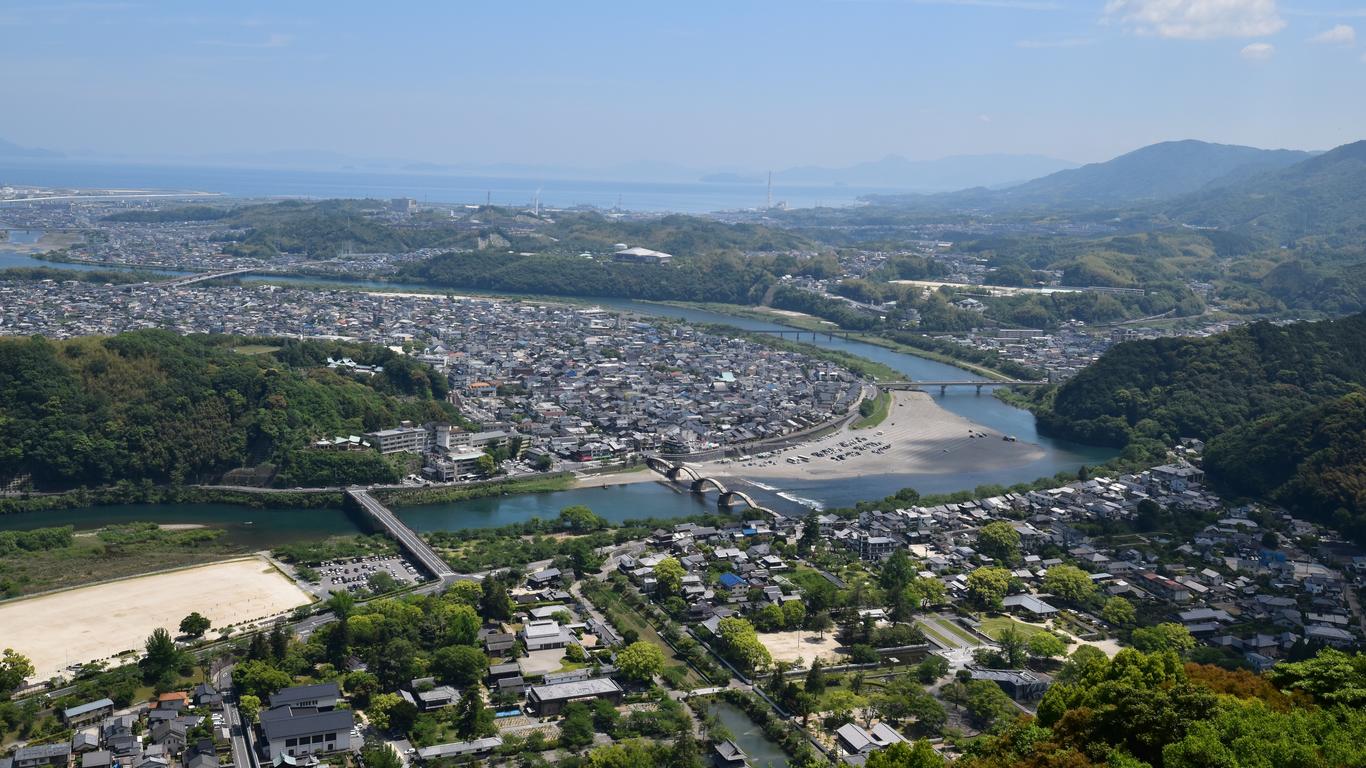Located at the southern end of Honshu, Iwakuni lies along the banks of the Nishiki River in Japan’s Yamaguchi Prefecture. It was once ruled by the Mōri clan before being granted to Kikkawa Hiroie, a 17th-century daimyō. Today, Iwakuni is renowned for its samurai-era residences and highly rare white snakes in which albinism has become genetically fixed.
Things to do in Iwakuni
Traditional Japanese artwork and artefacts are showcased at the Kashiwabara Art Museum, which is particularly famed for its collection of antique weaponry. Browse the beautiful ceramics, glassworks and calligraphy on display, together with swords, harnesses and jinbaori. Highlights include a gold-inlaid sword and a haramaki dating back to the Nanboku-chō period. Centuries-old paintings and books are on display at Iwakuni Chōkokan, while the area’s rare white snakes are the focus of the Iwakuni Shirohebi Museum.
Spanning the Nishiki River is the Kintai Bridge, an arched, wooden bridge dating back to 1673. Comprising five wooden arches and four stone piers, it has been designated as a National Treasure. The Kintai Bridge forms part of Kikkou Park, which is renowned for its cherry blossom viewing in the springtime before igniting with maple trees in the autumn.
The Kintai Bridge is nestled at the base of Mount Shiroyama, which is topped by the replica castle of Iwakunijō. It was originally constructed in the early 17th century by Kikkawa Hiroie and is now celebrated as one of the 100 Great Castles of Japan. In addition to exhibiting samurai swords and armour, the castle houses displays on famous bridges across Japan.
Getting around Iwakuni
Iwakuni is around an hour’s drive from Hiroshima and 1.5 hours from Hiroshima Airport, which has flights to destinations across Asia. Regular trains connect to the Iwakuni railway station and buses travel throughout the city.





